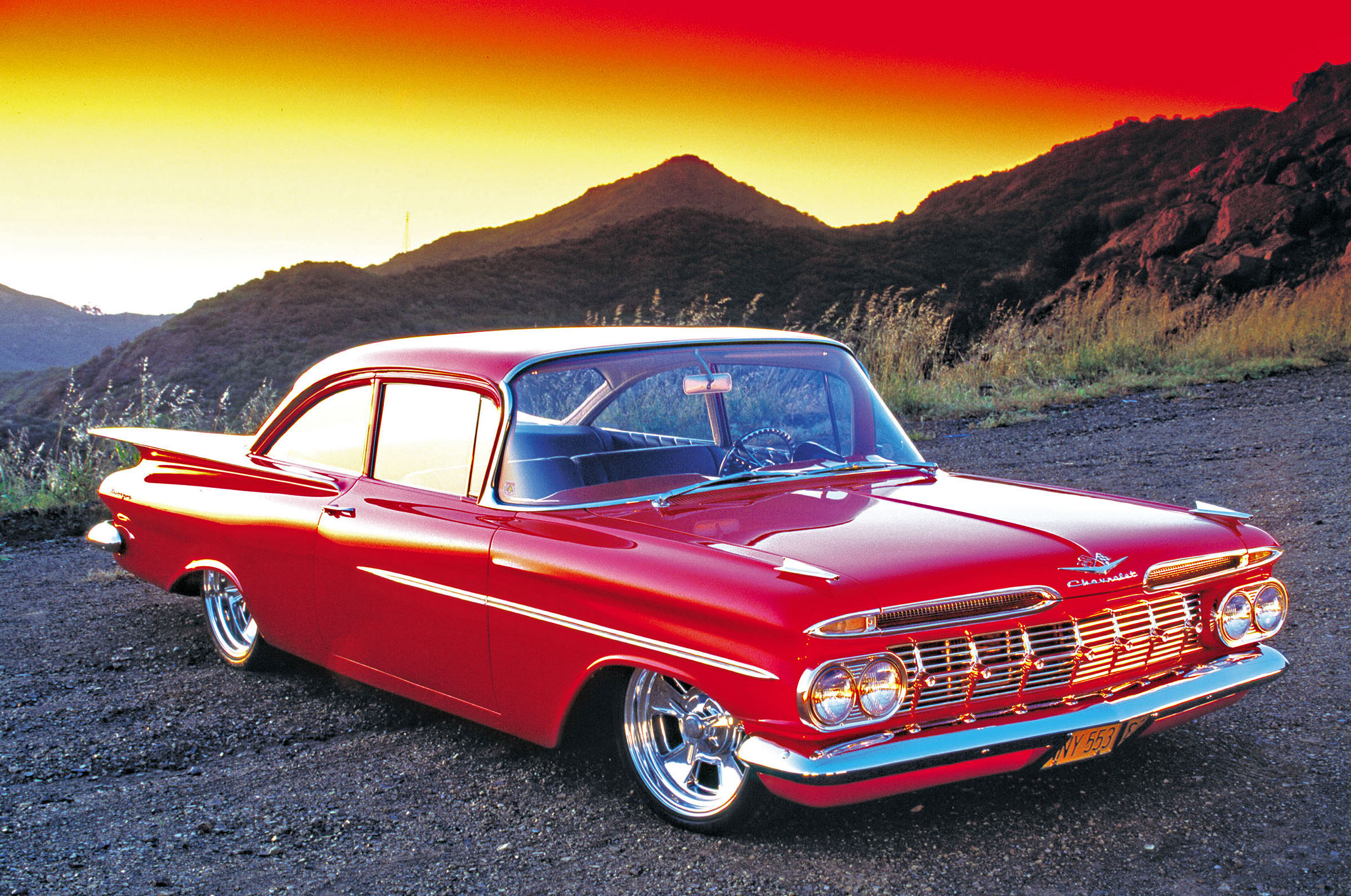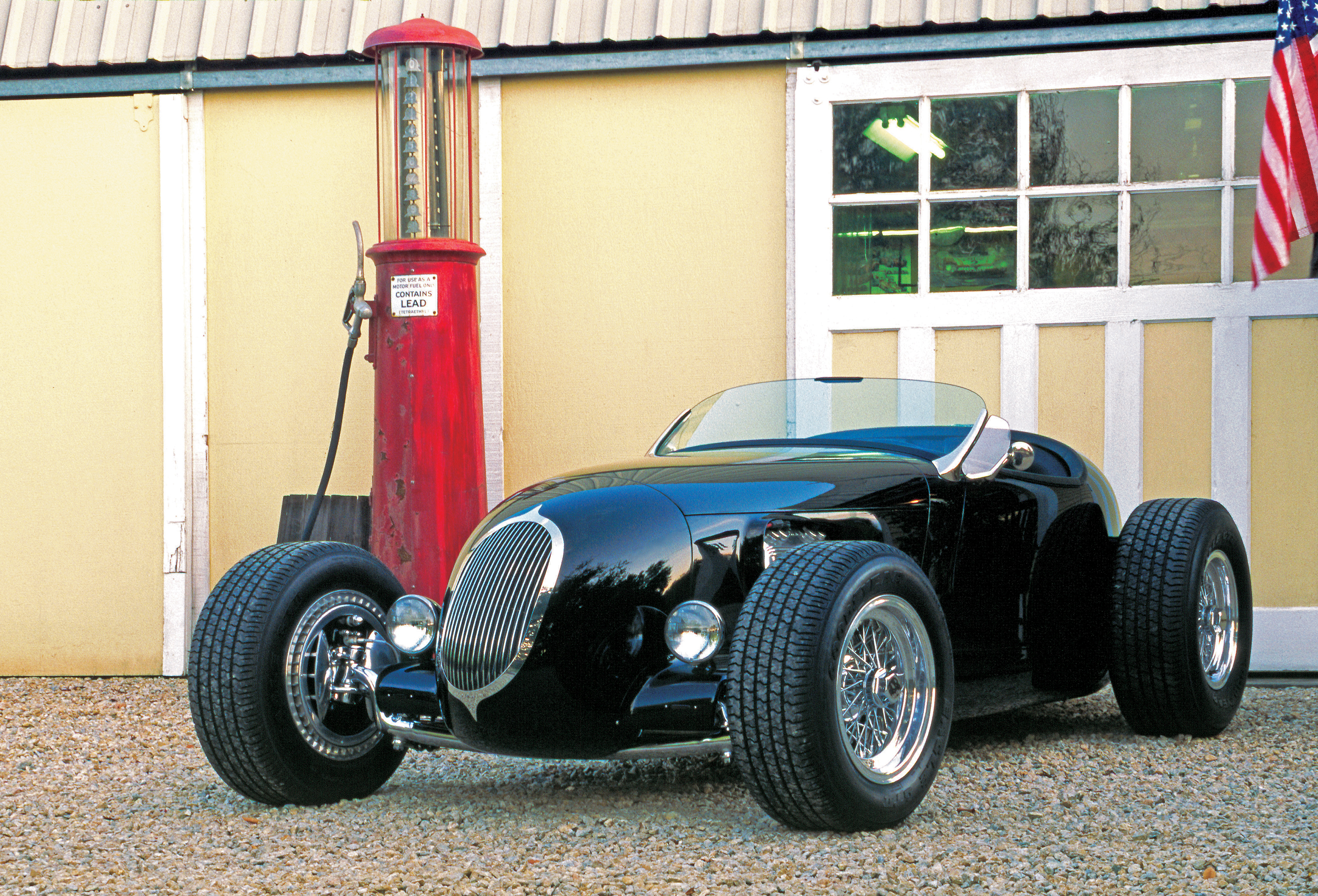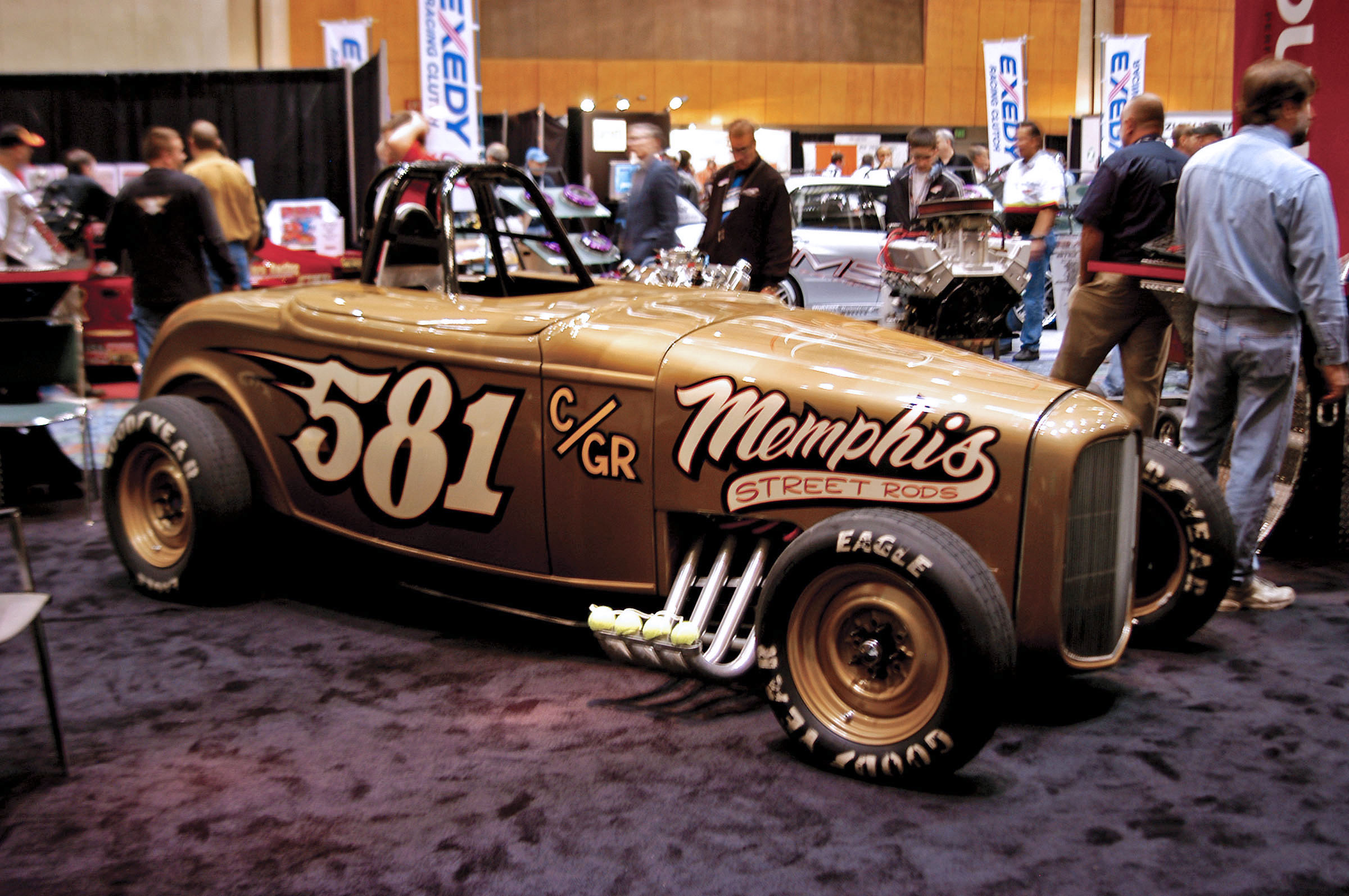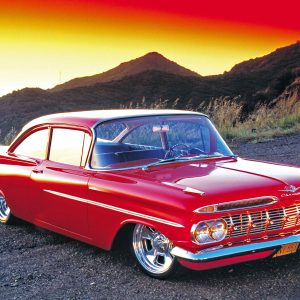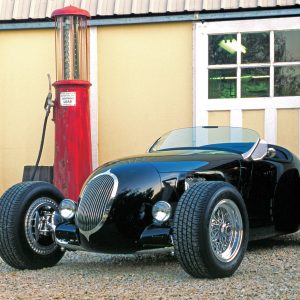Because it was there....


People often ask why Project “Tin Can” happens to be a ’63 Biscayne. “Because it was there,” is always the answer. A ’63 Chevy probably isn’t a typical first choice for a gasser-style car. In fact, if you asked 10 people to pick which car they would most like to build a gasser from, seven out of the 10 would probably say a ’55 Chevy
Of course we would agree, but you never know where your inspiration (or your next vehicle) is going to come from. This car was sitting in the lot of a local machine shop and somehow everyone who saw it passed it up. While it wasn’t exactly what we were looking for, we understood this Biscayne had real potential.


The idea for Project Tin Can actually started a few years ago while surfing the ’net. With the telephone number of childhood idol Dave “Big” Deal, the talented illustrator whose work was everywhere when we were growing up in the 1970s (his line of Revell model cars called “Deal’s Wheels” were among our favorites), we gave him a call. We talked for nearly three hours, and Deal invited us to his home near the Pacific Ocean. We had coffee, listened to ’60s jazz music, and talked all afternoon. We mentioned that we wanted to build a gasser and he offered to draw our “vision.” He nailed it, right down to the white headers and crusty, magnesium Halibrand wheels.
Not all of us are lucky enough to have a favorite artist draw our dream cars, but you can always have that vision of your car in your head. The car itself may change, but the style you want to build shouldn’t. The point is, choose your vision carefully and build your car exactly like that vision. The fact that Project Tin Can wound up being a ’63 Biscayne instead of a ’55 150 is irrelevant. When we bought the Biscayne, all that was needed was to switch our way of thinking and do the same mods to the Biscayne that were planned for a ’55. It worked for us because we followed the gasser style to the letter, and that’s the key. Build your car for yourself, and build it in one style. Don’t try to make it everything for everybody, because that doesn’t work for anyone.

Project Tin Can Timeline
When we introduced Project Tin Can to TheAutoBuilder readers (Feb. ’04, p. 76), we showed you several cars built in the gasser style to go along with the introduction of our big Biscayne. These cars were presented as references to keep focused on the gasser style, so get out your magazines and start reading. Put the issues with the cars that you would like to build into a box, so that you can use them later for quick reference. Also, get on the Internet—there are a million car websites out there. Begin collecting photos of cars similar to what you want to build.
When Part 2 of our series was published (April ’04, p. 74), Tin Can was really starting to look like the car we had originally envisioned. We had been collecting parts from swap meets and eBay, and the project was rapidly moving forward. We explained exactly what it would take to build a car in the gasser style. By reading that one article, you could literally build a gasser out of anything and have it look right.


Monthly magazine deadlines happen fast, so by the time Part 3 came out (June ’04, p. 74), we were struggling to keep up. We thought we would have been firing the car up and telling you how it ran, but we were not even close. Tin Can was looking good, but it was far from a runner. This might clue you in to planning extra time into your project, or simply forget a deadline altogether. Think you can build your car in six months? Well, add six more months, and that should be just about right. Double whatever time you think you can build it in—and double the cost you’re anticipating, too.
For Tin Can Part 4 (Aug. ’04, p. 89), we had built a genuine ’60s gasser on the cheap, and we shot many “after” photos to commemorate our triumph. Take a look at the story again and notice the fill flash on the engine photos, as we tried to duplicate the wonderful effects of 1960s photography. Yes, the thing that had occupied one garage stall for nearly two years was actually able to be driven. It now works as a semi-daily driver, hauling this editor to and from shops, where the car provides instant credibility and draws car guys like flies.
Psychotic Reaction
It took months of building and thousands of dollars, but we built a car that literally stops people dead in their tracks. And we mean jaded Southern Californians, who think they have seen it all. It’s a nice feeling to have pulled off a car that so many enthusiasts love, and watching peoples’ reactions has been a real treat, too. From the local auto parts store to Starbucks, virtually everyone has to stop and stare, most in shock and disbelief, but others genuinely like it. They may not know what it is, but it sounds mean and they like it. And if they don’t see it, they hear it and soon need to find out what is making that awful racket.

Thumbs-up from kids and adults are common. But the most fun comes from the uninitiated. One evening after pulling into a favorite taco stand, the girl at the counter asked, “Is that your car?”
“Yes, it is.”
“What happened?” she asked.
We bust out laughing and tried to explain to her that the front end is supposed to look like that. She thought the car had been in an accident.
In closing, it doesn’t matter which style you choose when you build your own TheAutoBuilderr, just pick one style and stay with it. Build it right and the rewards will be plenty. It’s like driving a cartoon, we think.
And that probably best sums up Project Tin Can. It’s rough, mean, loud and a whole lot of fun all rolled up into one cheap thrill. You really should build something similar.





